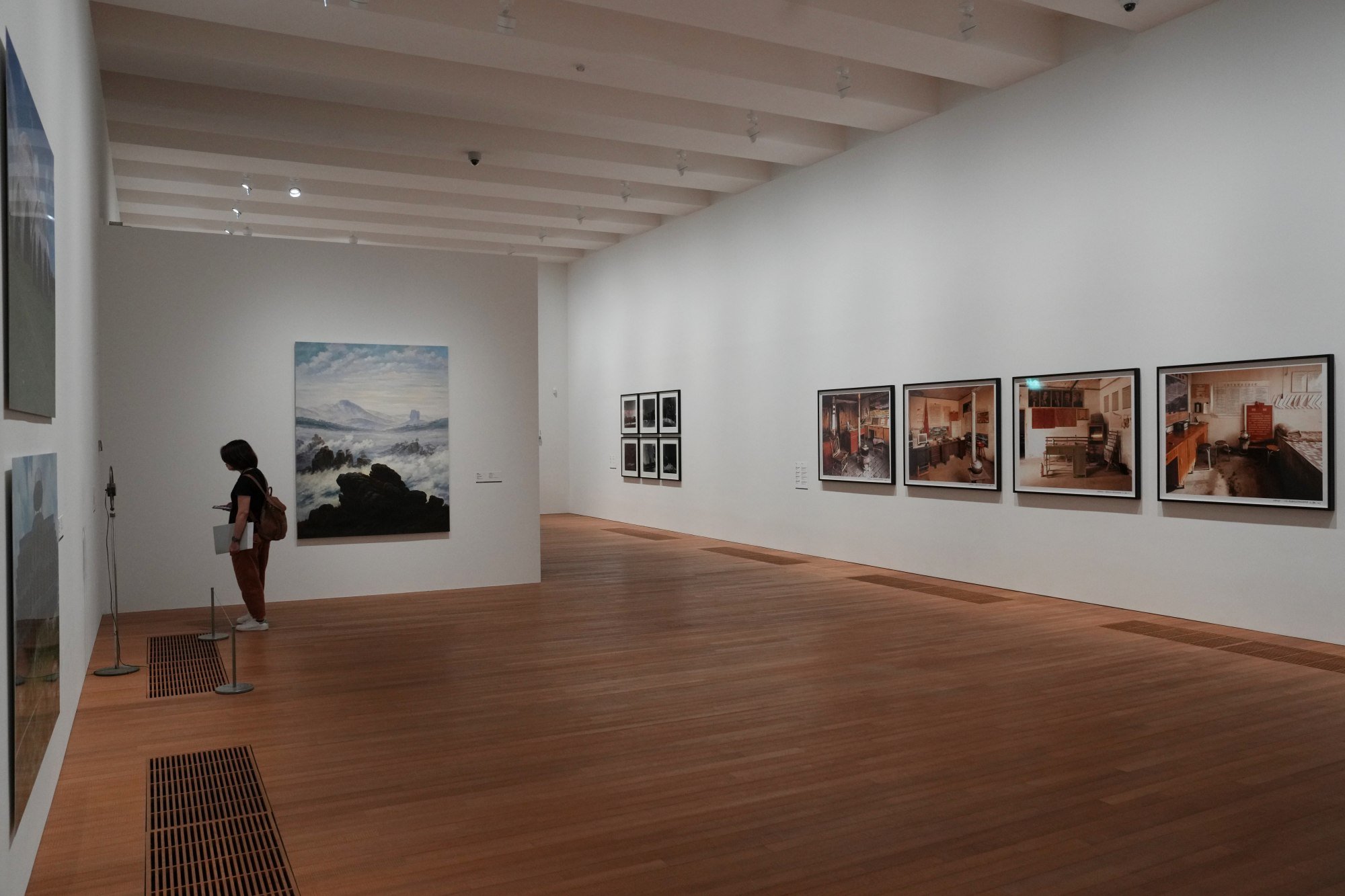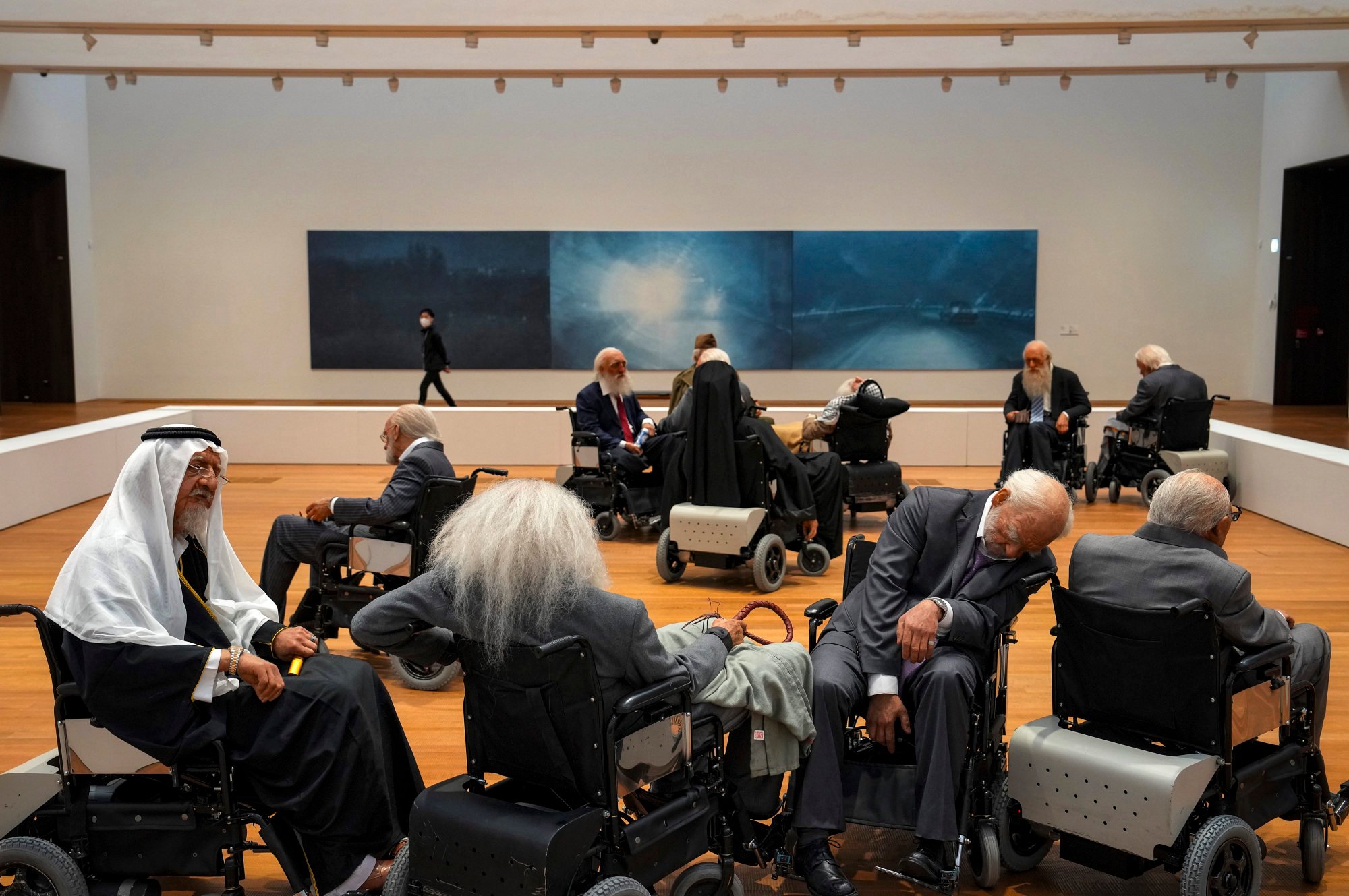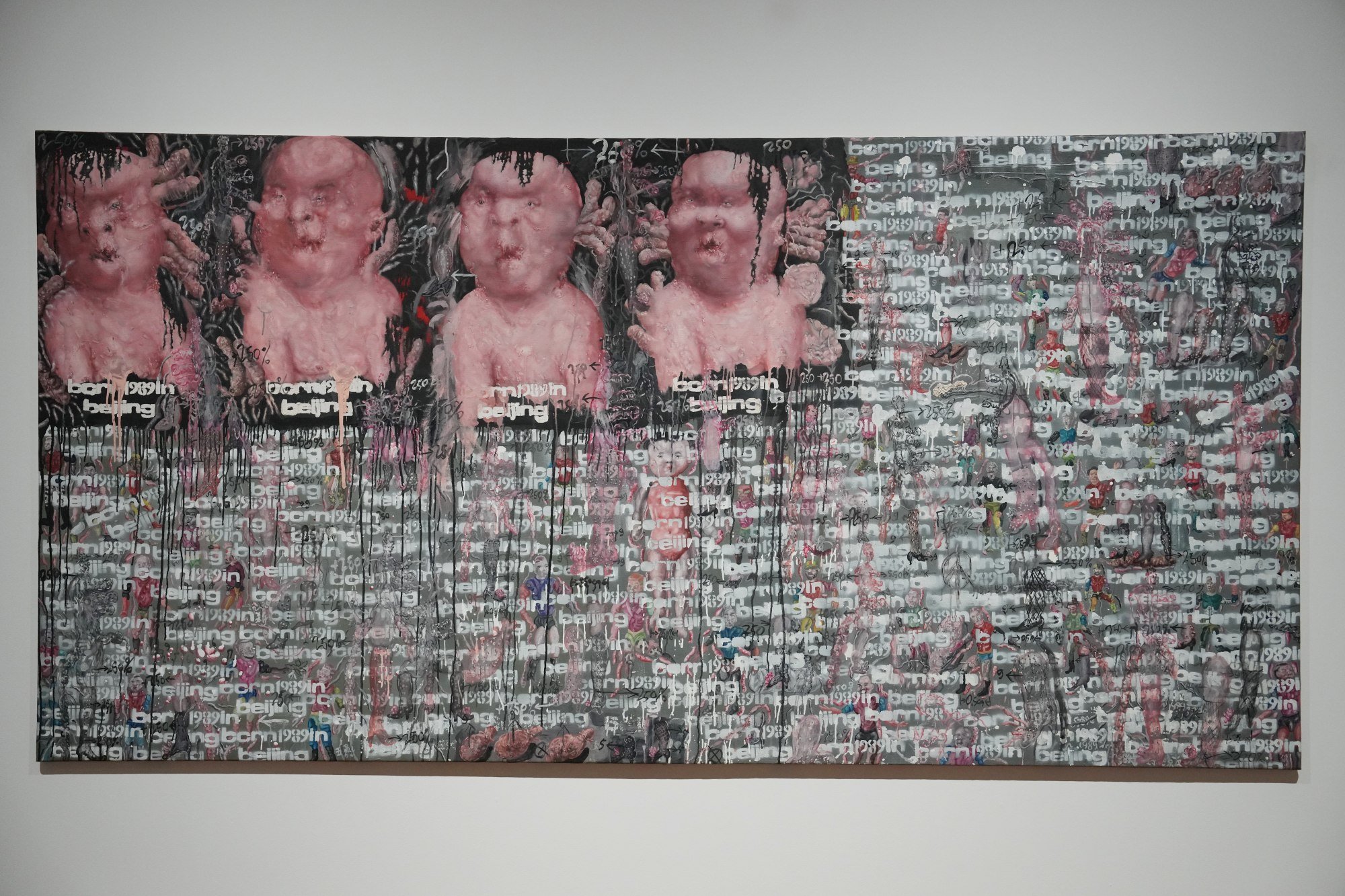
Review | ‘Art for art’s sake’ in M+ museum’s new show? No, this is political art born of the ferment of 1990s China, whatever Sigg Collection curators may say
- Curator of Hong Kong museum’s second exhibition of works from its founding Sigg Collection emphasises contemporary Chinese art’s ‘visual language and quality’
- There is more to it than that, as works such as dissident artist Ai Weiwei’s Ton of Tea and Sun Yuan and Peng Yu’s parody of old men in power show
In 2012, when Hong Kong’s M+ museum of visual culture received 1,510 important works by Chinese artists from the Swiss collector Uli Sigg as its founding collection, the contract between them stipulated that it must have three successive, dedicated exhibitions showing different selections from the collection in the three years after it opened in 2021.
Afterwards, around 200 pieces must always be on public display in different parts of the museum or on loan to other institutions.
Perhaps in light of the unwelcome focus in 2021 on whether certain works in the collection passed muster with Hong Kong’s then newly imposed National Security Law – nationalist politicians were particularly incensed by a photograph of dissident artist Ai Weiwei raising his middle finger at Tiananmen in Beijing – the museum is trying to downplay the political nature of the second Sigg Collection exhibition, which opened to the public on September 22 alongside an exhibition of shortlisted works competing for the second M+ Sigg Prize.
“We are trying a new curatorial approach which emphasises the visual language and visual quality in contemporary Chinese art, which is more like an ‘art for art’s sake’ kind of concept,” curator Wu Mo said. She maintained that there had been no censorship during preparations for the exhibition.
The Ton of Tea is a reference to Chinese culture and the nation’s love of tea
The title of the show, “Another Story”, conveys a desire to narrate a history of Chinese art that is not wholly socially or politically driven, she added.
This is in the same vein as the formalist approach advocated by the American critic Clement Greenberg in the 1950s, who did so as a member of the anti-Communist American Committee for Cultural Freedom pushing anti-ideological, anti-realist forms favoured by artists associated with abstract expressionism.
Leo Li Chen and Wu Mo on 1990s Chinese Art
Yet it is hard to ignore the social context behind the 130-odd Chinese works in “Another Story”, all created from the 1990s to the early 2000s, a period the curators (which include Sigg himself) chose to focus on because it was a transformative era when communist China switched to what it called a “socialist market economy”.
Indeed, the titles of the show’s four subsections – “Facing Uncertainty”, “Sensory Overload”, “Ambivalent States” and “Hidden Disruption” – reflect how art made then was affected by the tectonic scale of that decade of reforms.
A Greenbergian analysis of Ton of Tea (2006) would ignore completely the biographical details of its maker, Ai, and focus on it being a 1-cubic-metre solid block of compressed Pu’er tea leaves resting on a wooden base that looks like a standard shipping pallet.

This sculpture is made of organic materials subject to decay – one should be able to smell the tea if standing close enough – or ageing, as may be the case for this kind of fermented tea, and therefore evolving constantly despite its solid, immutable appearance.
Unlike the kind of pure, perfect forms made by American minimalists such as Donald Judd, often with industrial materials, the edges of Ai’s tea cube are not entirely straight and the surface is not uniform in appearance, with one tiny red and white bit of tea packaging poking through on one side like a worm traversing dark, moist earth.
Wu explained that the work is included under “Sensory Overload”, a subsection about the rise of consumerism, and placed next to He Xiangyu’s Coca-Cola Project (Extraction) (2009), a work made by burning many bottles of China’s favourite American soft drink.
“The Ton of Tea is a reference to Chinese culture and the nation’s love of tea,” she said.
That interpretation recalls an instance when Henry Tang Ying-yen, chairman of the West Kowloon Cultural District Authority which runs M+, told reporters in 2021 that another work by Ai in the collection, White Wash (1995-2000), was artistic confirmation of the resilience of traditional Chinese culture, even though the very title of the collection of ancient clay pots covered in white paint is suggestive of a more critical stance.
Arguably, going beyond the form of Ton of Tea would yield some promising lines of inquiry, such as how it relates to the famously combative artist’s irreverent use of other “traditional” Chinese materials, the relationship between art and commodities in global capitalism, and how his apparent adoption of minimalism ends up producing a maximalist symbol of the sheer irrepressible nature of a country of over a billion individuals.

There are other examples here of creative pastiche, from Wang Xingwei’s references to Western art history in Summary (2000) to Xie Nanxing’s riff on Pieter Breugel the Elder in his Sigg Prize shortlisted work The Ballad of Pieter Picking His Teeth (2022), shown separately in the ground floor gallery.
Another highlight of the show is Gu Dexin’s 2021-11-12, an extraordinary installation with a red cushioned chair at one end of a long, red carpet like the kind that VIPs walk on, facing a plain, red painting in a gilded frame hung on a wall at the other end.
Originally titled 2000-11-4, it was first displayed in a seminal, anti-establishment exhibition which opened in Shanghai on the titular date, called “F*** Off” and incidentally co-curated by Ai.

Now renamed after the day M+ opened, it remains a provocative statement about the vapid pursuit of power and status, all the more since the museum arranged for it to be “activated” in the style of the original 2000 exhibition: from September 22-24, the seat’s cushion was temporarily filled with fresh meat and visitors were allowed to sit in the chair, before the conservation-friendly stuffing was put back in.
There are many other works which simply cannot be considered apolitical:
-
Sun Yuan and Peng Yu’s Old People’s Home (2007), a hyperrealistic parody of old men in power;
-
Liu Wei’s 1997 painting Born 1989 in Beijing (250%), with grotesque infant figures symbolic of the emotional state of those growing up after the June 4, 1989 Tiananmen crackdown;
-
Qu Yan’s “Power Space” series showing photographs of vacated village chief’s offices and remnants of the infrastructure of top-down power;
-
blacklisted artist Li Songsong’s The Happiness of Long Sleep (2006); and
-
Gong Jiang’s 2004 faux Republican-era painting of a group of people huddling inside a teahouse with a title that is, sadly, all too apt: Corner of a Teahouse – Don’t Talk about Politics.

And then there is the large gallery filled with heroic realism paintings and Wang Jianwei’s video collage of Cultural Revolution-era ideological performances (which for some reason comes with a “may not be suitable for children” label). It is rather naughty, but wonderfully trenchant given that the whole exhibition is about the vagaries and impermanence of identities, that the curators have placed Zhou Tiehai’s painting of a camel posing pompously in a fancy ceremonial coat in the background.
“Another Story” isn’t just a wink and a nudge. It is visceral, uninhibited storytelling which should be proudly promoted.
Additional reporting by Mabel Lui
“M+ Sigg Collection: Another Story” and “Sigg Prize 2023”, Sigg Galleries and Main Hall Gallery, M+, West Kowloon Cultural District, Tue-Thurs and weekends, 10am-6pm, Fri 10am-10pm, ongoing and until January 14, 2024 respectively.

